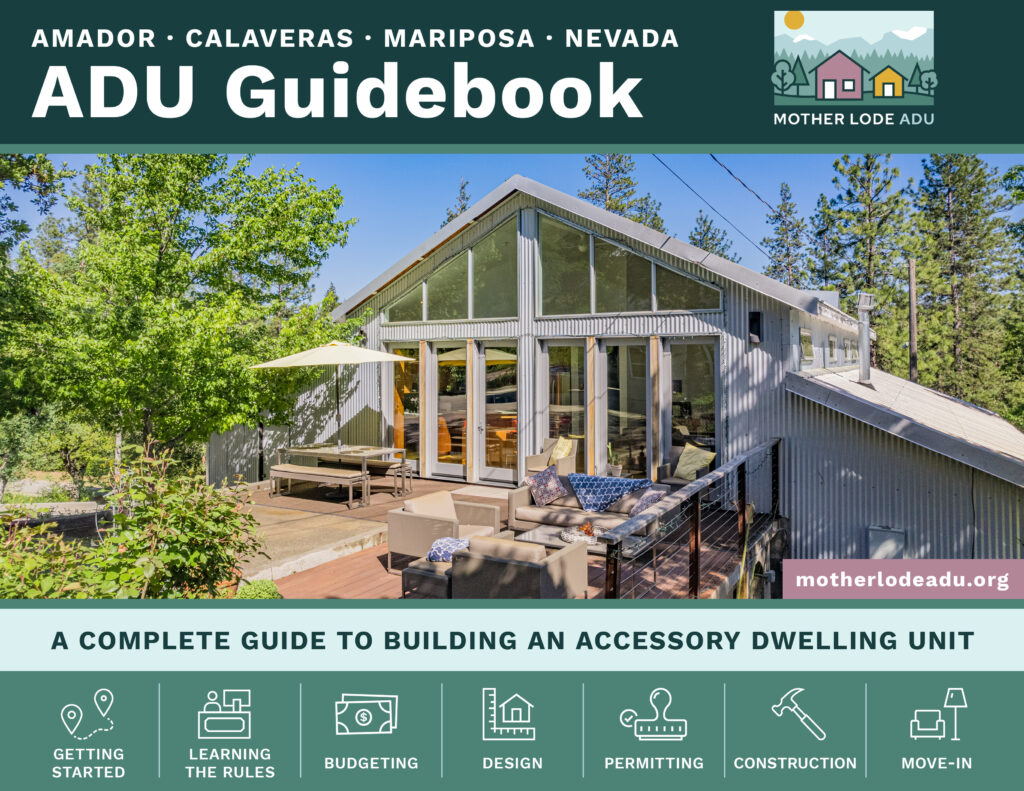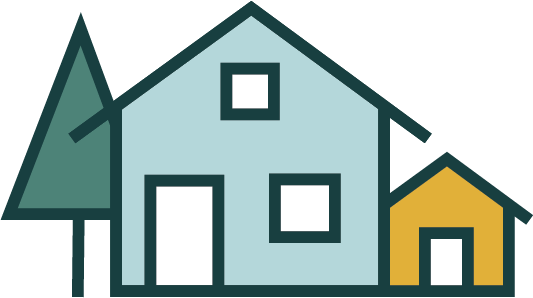
ADU 101
Back to Basics
What is an ADU?
Accessory dwelling units (ADUs), also known as “granny flats,” “in-law units,” or “backyard cottages,” come in many shapes and sizes but are always a self-contained home that is usually smaller than the main home and legally part of the same property. ADUs must have a kitchen, bathroom, and place to sleep, and can range from studios under 500 square feet to more than 1,000 square feet with multiple bedrooms.
Types of ADUs
Terms may differ depending on where you live, but these are common types of ADUs.
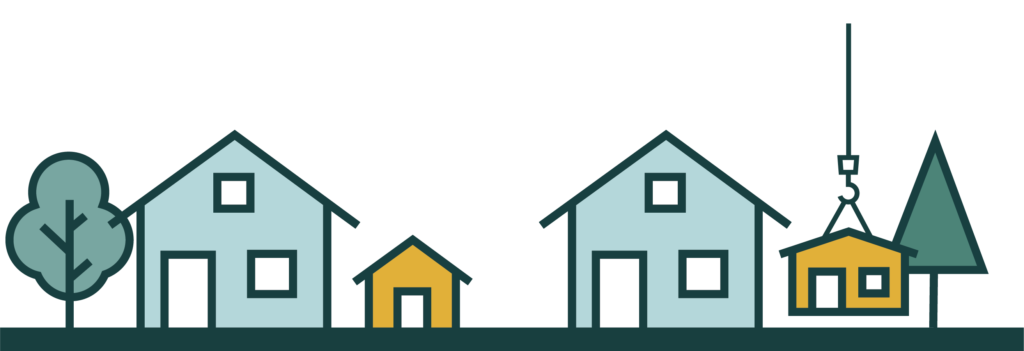
Detached
New freestanding structure separate from the main home (site-built or prefab/manufactured)
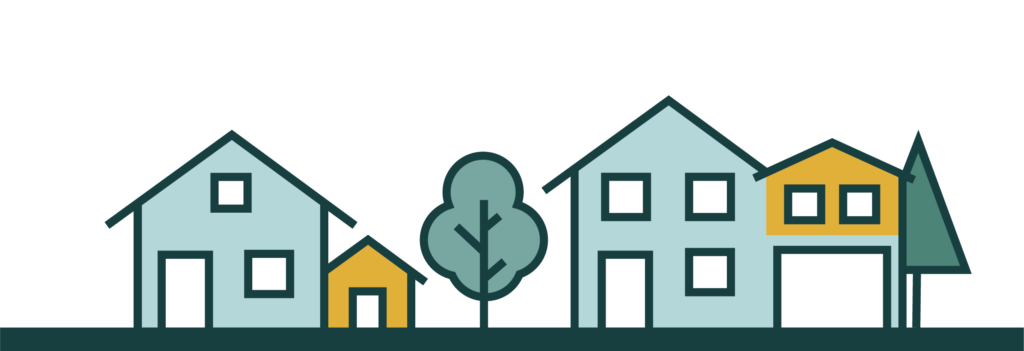
Attached
New structure (may include converted space) sharing at least one wall with main home
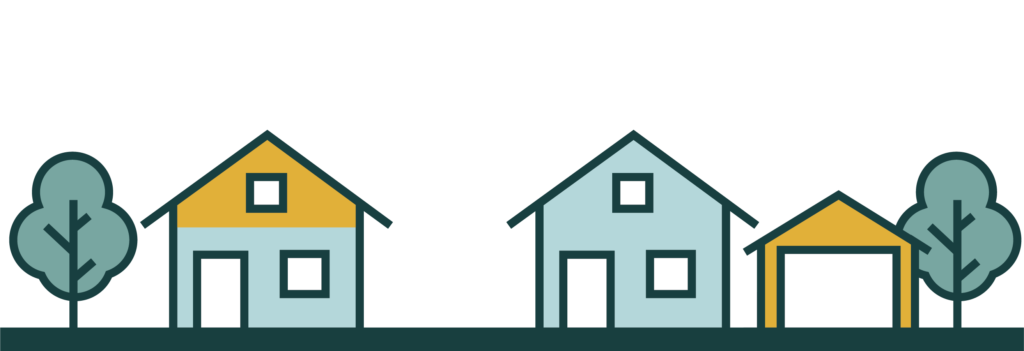
Conversion
Converted existing space in the main home or on the property (bedroom, basement, detached garage)
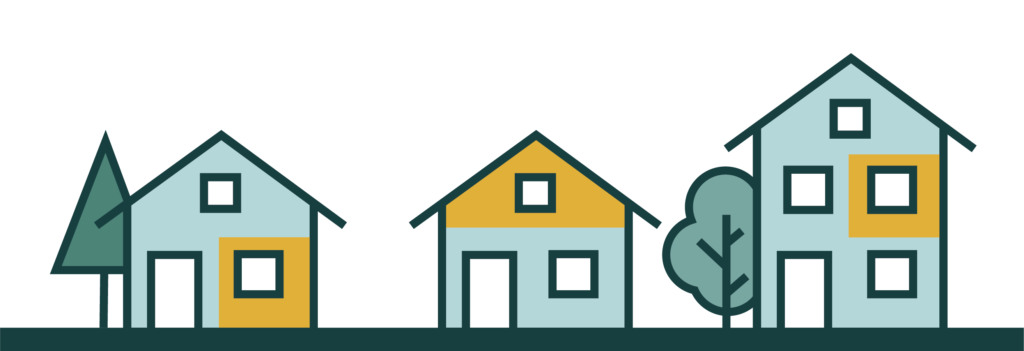
JADU
A smaller conversion ADU within the main home or attached garage.
- Up to 500 square feet
- Efficiency or full kitchen
- Can share bathroom with main house (if it’s accessible from the JADU)
- Owner must live on the property
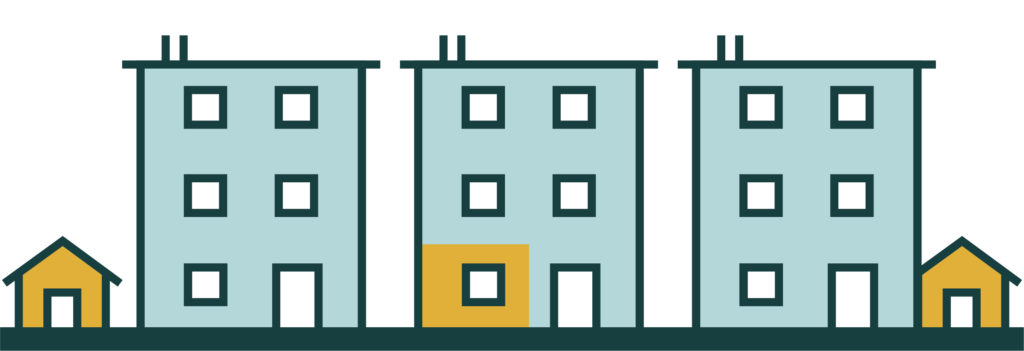
Multi-Family
A detached, attached, or conversion ADU on a multi-family property (duplex, triplex, apartment building)
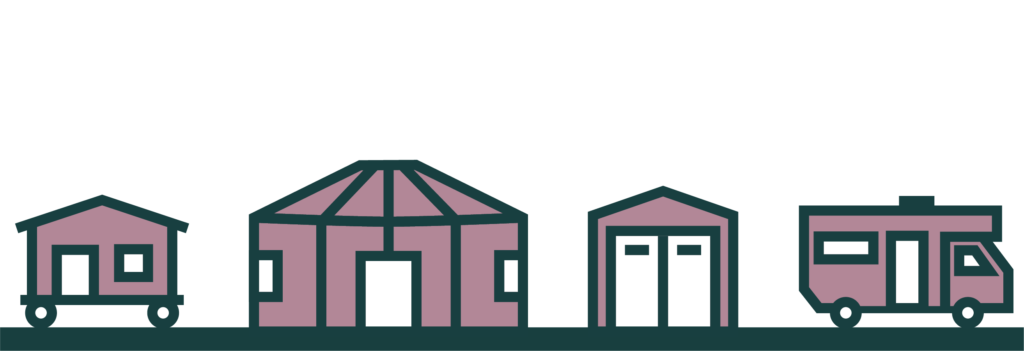
What isn't an adu?
RVs, tiny homes on wheels, yurts, and storage structures are generally NOT considered accessory dwelling units.*
ADUs do not always fit neatly in one category – like an attached ADU made from converted space, for instance.
*In most cases – there may be some exceptions in your county, so speak with staff to verify.
Project Timing
Building an ADU is an investment of time as well as money. Most projects take 12-24 months to complete, with interior conversions being the fastest.

Frequently Asked Questions
Here are a few of the most frequently asked questions about getting started. See the content below and our ADU Guidebook for more guidance, resources, and tips for all steps of the process.
Looking for Spanish FAQs? See all FAQs.
This site walks you through each part of the ADU process, from gathering initial inspiration and learning what you can build through construction and becoming a landlord or moving in.
You can also use our Process-At-A-Glance resource for an overview of the process and some initial issues to consider as you get started.
Start with Getting Started and walk through the pages of this site one-by-one for a detailed guide on what to do next.
Site-built/Traditional: A traditionally constructed ADU is designed and built specifically to your preferences and property and built on site (“stick-built”). This option allows for a lot of customization and smaller changes to be made throughout the construction process.
Prefabricated/panelized/modular: These ADUs are partially or mostly built in a factory, then shipped to your site to be put together. Sometimes the company will include all services in their fee (“turn-key”), including help with permitting and all on-site construction tasks (e.g., laying the foundation, utility hookups, etc.). Other times you’ll need to hire additional professionals to help.
Accessory Dwelling Units (ADUs) come in many shapes and sizes but are always a self-contained home that is usually smaller than the main house and legally part of the same property. They must have a kitchen, bathroom, and place to sleep, and typically range from studios under 500 square feet to over 1,000 square-foot homes with multiple bedrooms.
Junior Accessory Dwelling Units (JADUs) are within the footprint of your home (or attached garage) and less than 500 square feet. They can share a bathroom with the main home and/or have an efficiency kitchen (sink, cooking appliance, fridge, and small counter). Construction costs for JADUs are typically much lower. In most cases, the property owner must live on site in either the main home or the JADU.
State law now allows homeowners to have both a JADU and a regular ADU on their property.
To see translated Spanish FAQs, head to All FAQs.

Why Build an ADU?
From space for your loved ones to building your retirement through renting, an ADU will grow with you and your family over time.
There are many reasons to build an ADU — keeping multiple generations of family together on the same property, financial security, flexibility over time, safe and convenient housing for friends or local workers, and many others.
Here are some of the reasons to build an ADU:
Housing Family
A nearby home for aging parents or grandparents, adult children, or loved ones with special needs.
Rental income
A steady source of additional income for retirement or a rainy day. Can come from the ADU or the main home.
A Home As You Age
A nearby home for caregivers or for aging adults who want to rent their main home and live in their ADU.
Property Value
Not only will you receive rental income in the short term, but your sale price and property value can increase too.
Safety
An extra set of eyes and hands on your property can be helpful for safety, when you travel, upkeep, and more.
Local Support
More small-scale living and rentals for workers supports our local environment and businesses (and reduces commutes).
Are you ready to ADU?
We have resources to help you at every step of the way, from initial thoughts through move-in.


